Roof Leak: Causes, Prevention, and Repair Solutions
Reading Time: 11 minutesLeaks, noticeable and hidden, are believed to be one of the most destructive and dangerous enemies of construction of all types. Even a barely perceptible amount of rain or melt water that gets through the surface can seriously damage the integrity of the frame, insulation, ceiling, walls, and the whole building. Unfortunately, leaks happen more often than you think, especially in roofs that need renovations or are over ten years old.
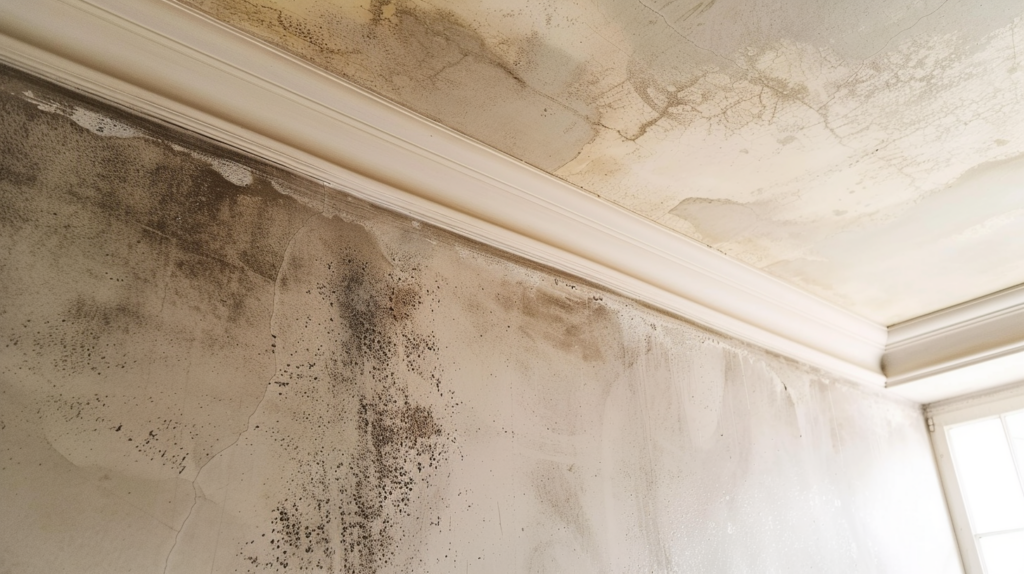
Let’s examine the prevalent causes of leaks, membrane and non-membrane solutions, and up-to-date roof protection and repair methods professional roofers use. For topical information, we turned to Denis Tchernov, ID Flat Roof’s main contractor and expert.
Why do roofs leak at all?
Any leak in the roof is a symptom, an indicator that something is wrong and needs to be repaired, replaced, or reconstructed.
– Therefore, at the initial stage, it is essential to determine what prevented the whole roof structure from performing its primary task – protecting the house from external factors. In my experience and observations, several common problems lead to dripping water and leaks.
Denis Tchernov
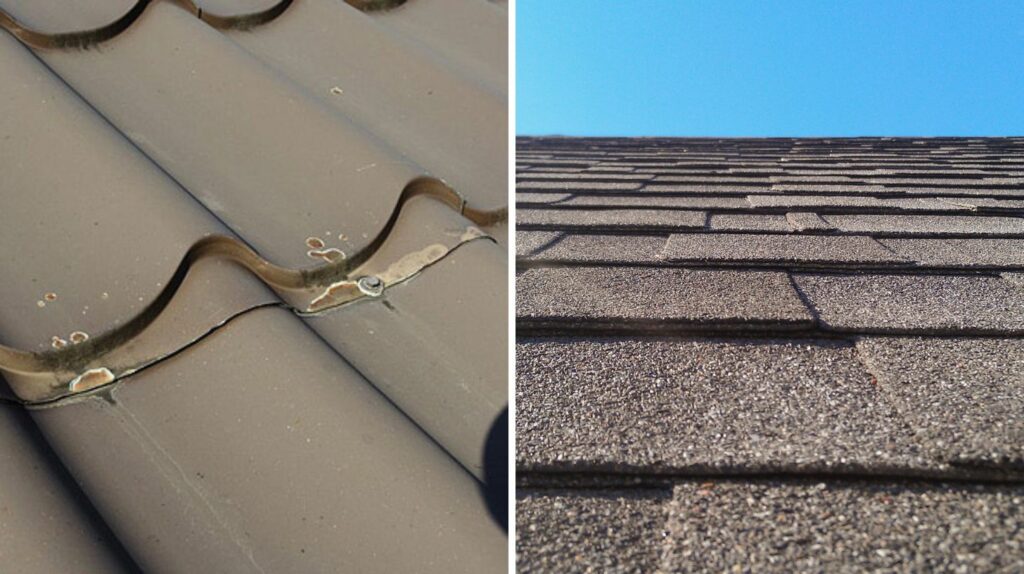
- The use of low-quality or unsuitable materials is a leading cause. Some materials, especially those not designed for specific climates (UV rays, heavy rains, hurricanes) and conditions, degrade quickly under exposure to harsh elements. For instance, using standard asphalt shingles in an area prone to heavy snowfall or extreme heat can lead to rapid deterioration, causing roof leaks.
- Even the industry-best materials will fail if the installation is done with mistakes. Poor workmanship, including improper sealing, loose flashing, and improper shingle alignment, can create vulnerabilities where water can slowly and unnoticeably seep through. Inadequate slopes or insufficient drainage are also common mistakes, even among professionals.
- Physical damage to the top-covering material, caused by falling branches, hail, or human activity (such as foot traffic on the roof), can lead to punctures, massive holes, and cracks. Over time, these minor breaches can expand, allowing standing water to get inside and cause damage.
- Like any other part of a building, roofs have a lifespan. As roofing materials age, they become less effective at keeping water out. Asphalt shingles may lose granules, metal roofs rust, and tiles crack. Eventually, wear leads to weakened sections that become prone to leaks.
- Roof surfaces that accumulate water (like modern flat roofs) are more susceptible to leaks because they allow water to pool instead of drain efficiently. Incorrectly designed or installed ventilation can also trap moisture. That is not good.
- When gutters become clogged, they are essential for diverting water (rain or melt) away. The drainage system stops working fully, causing leaks (especially near the edges) and standing water on the roof.
Where Roof Leaks Appear Most Often and Why

Chimneys, as well as any other standing structures on the roof surface, are well-known weak points. Of course, there are flashings around chimneys, which are specially designed to prevent even minor leaks. However, flashings can slowly deteriorate or rust, leading to the wet problem we are discussing.
Roof valleys are another common area to look for leaks or possible damage at the beginning of any roofing inspection—these areas, where two different parts of the roof meet, handle a lot of water flow. If roofing materials are installed incorrectly, water can penetrate the seams between shingles, membranes, or flashing.
Roof vent pipes require an additional 100% reliable waterproof seal around their base. Over time, the rubber or sealant can crack, preventing the roof leak from prolonging.
In cold zones, Ice dams are likely to form at the roof’s edge, trapping water behind them. This meltwater can then seep into the roofing structure.
Which Roofs Are Less Likely to Leak?

I have been renovating and installing roofs for 15 years. It is impossible to design a flat or pitched structure that would be wholly protected from leaks for 20, 30, or 50 years, especially if we are talking about flat roofs. Therefore, we recommend conducting seasonal inspections of the attic and the roof.
Denis Tchernov
- Flat roofs cannot drain water as efficiently as sloped roofs. As a result, water in the form of puddles can stand on the surface, and even an unnoticeable crack or puncture can allow that puddle to harm property.
- Asphalt shingles are cheap and are widely used as roofing materials throughout the United States. However, even when properly installed, they can be susceptible to leaks, especially as they age. Shingles can lose elasticity, crack, and let water through.
- Metal surfaces generally protect roof surfaces more reliably than other non-metal materials. However, they can still develop leaks, particularly at seams or where fasteners have loosened over time. Corrosion or rust can also lead to leaks if not properly maintained.
- Tile roofs (technology known to mankind for thousands of years) are highly long-lived and less likely to develop leaks if properly installed. However, water can penetrate the underlying structure if tiles crack or are displaced.
- Slate roofs, which are supposed to be the least popular option in our country, last for decades (or even centuries) without leaking. However, like tile roofs, they can develop leaks if individual slates crack or become dislodged.
Is It Possible to Make a 100% Leak-Proof Roof?
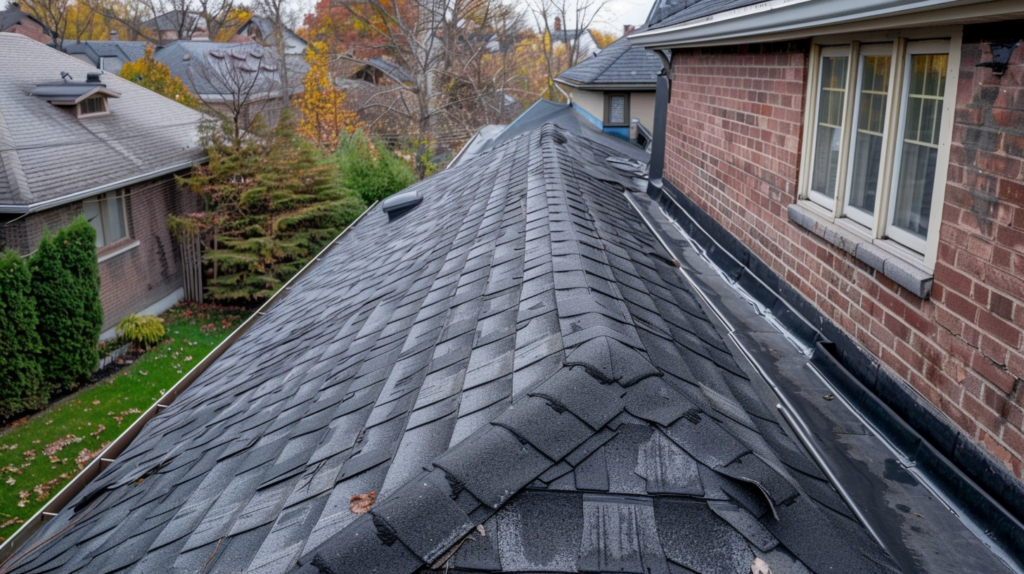
Denis Tchernov:
“While it’s impossible to guarantee that a built-from-scratch roof will never leak, it is possible to reduce the roofing leakage risk significantly. All you need is a project designed by professional builders, quality materials that meet industry standards, and a team of roofers who will install the roof.
Some advanced roofing systems, such as those with seamless membranes or liquid-applied waterproofing, offer near-impenetrable water resistance. That is why we recommend them for installation on flat and low-slope roofs. “
How to Install a Roof Without Leaks?
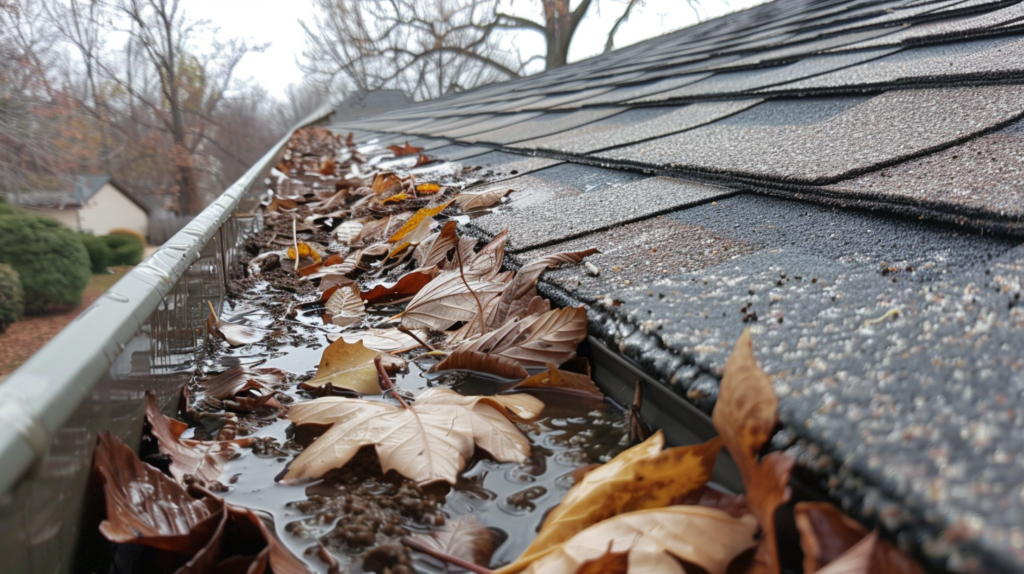
- The first advice is to use only roofing, insulation, and underlayment materials certified to building standards for use in your climate. Consider the level of precipitation, the range of winter and summer temperatures, the level of UV radiation, and the wind load on the roof.
- For sloped roofs (regardless of architectural type), ensure the pitch is sufficient to allow water to flow off efficiently. Flat roofs should have an appropriate drainage system (internal drains or scuppers to prevent dripping water and puddles).
- Flashing is a weak point. However, it is probably the most considerable unit for sealing roof joints. Use trusted flashing materials and ensure they are correctly installed. As mentioned above, pay special attention to weak areas around any standing structure, like chimneys.
- So-called valleys are high-risk areas for roof leaks. To prevent ‘wet issues,’ use extra layers of protection, such as waterproof membranes or metal flashing.
- Roof ventilation is installed according to the roof area, design, type, and architectural features to prevent harmful moisture from gathering and ensure enough air circulation in the attic or roofing space.
- It is best to consult with local roofers (we are glad to help you if you live in Boston and Massachusetts) and ask them to install ice and water shields along the eaves.
Why Leaks Are Believed to be So Dangerous?

Water in any form gathering on the roof will no doubt weaken the roof frame, underlayment, insulation, and the whole structure, including rafters and decking. Over time (in a month, a week, or in half an hour), this can lead to sagging or even collapse in severe cases.
If a roof leaks, harmful water and moisture can diminish the effectiveness of single-ply or even multi-layer insulation, making the building less energy-efficient. It can also damage the roofing “pie” (the layers under the surface), leading to high-priced repairs.
Moisture from leaks creates the perfect environment for things you don’t want to see in your home – like mold. Mold can not only critically damage building materials but also pose health risks.
Leaks can cause severe and not only aesthetic damage to ceilings, furniture, and floors, ruining paint, drywall, and furnishings. Persistent leaks will lead to expensive interior repairs.
In extreme cases, water can trickle down to the foundation, which is unsafe for the entire building.
Why Should I Fix Roof Leaks Promptly?
Denis Tchernov:
“Ignoring even a small roof leak can lead to escalating problems. The longer a leak goes unfixed, the more damage it can cause. Remember that mold and mildew mentioned above can be dangerous to your property and your health”.
Repairing Leaks: Some Expert Advice
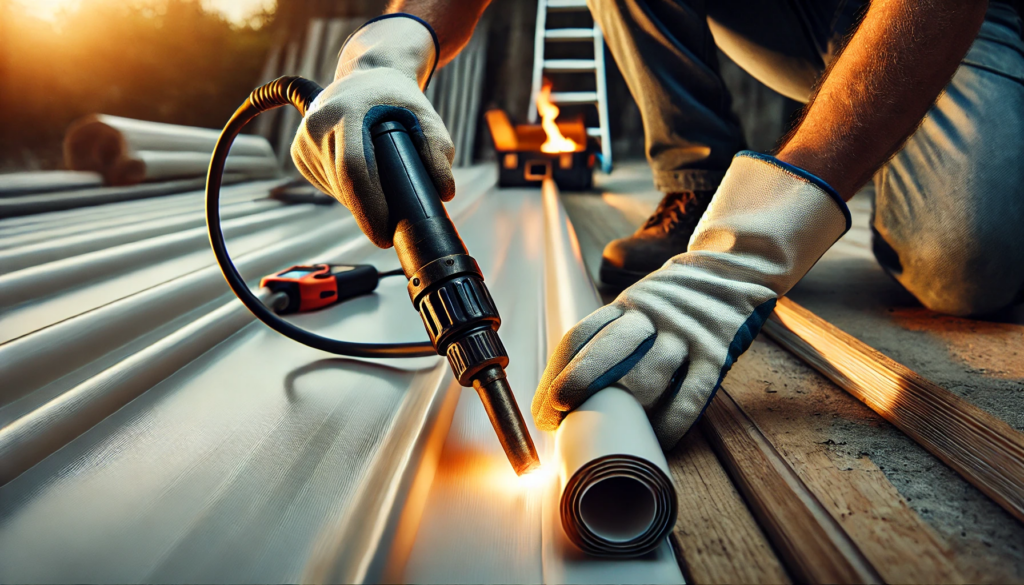
- Damaged or worn-out asphalt shingles can be dismantled one by one.
- Flashing around any roof elements like chimneys may be resealed or replaced if it’s the source of the ‘wet’ problem.
- Metal roofs are supposed to be difficult to repair in case of serious damage. However, minor repairs can be made by tightening loose fasteners, sealing seams, or replacing 1-2 lists or corrugated shingles.
- Cracked or displaced tiles are dismantled and replaced. Care must be taken to ensure the waterproof membrane beneath the top material is intact.
- According to experienced roofers, flat roof leaks are often repaired using patches or sealing membranes. Sometimes, a new waterproof layer may be applied across the entire surface.
Symptoms of Roof Leaks
Over 15 years of working with roofs, we at ID Flat Roof have identified several common symptoms that may indicate that the roof is leaking or will start leaking soon.
- Traces of dried stains or wet spots on the walls and ceiling.
- Mold or mildew (in the attic, ceiling, walls, and corners inside the building)
- Roof dripping water during or after a rainstorm
- Damaged, rust, cracked, or worn-out shingles and tiles (or missing ones)
- Puddles of water on flat roofs
- Damp or musty odors you can smell inside the house
Why Should I Contact Professional Roofers?

While minor leaks may seem easy to fix with special patches or partly DIY roof renovations, major roofing projects and repairs are best left to professionals.
Skilled and equipped roofers use specialized tools (not found in the average garage) and industry-best materials. Emergency repairs are sometimes necessary, especially during or right after severe weather, and local professionals are equipped to handle these situations safely, effectively, and as soon as possible.
Roof Repair for Different Roof Materials
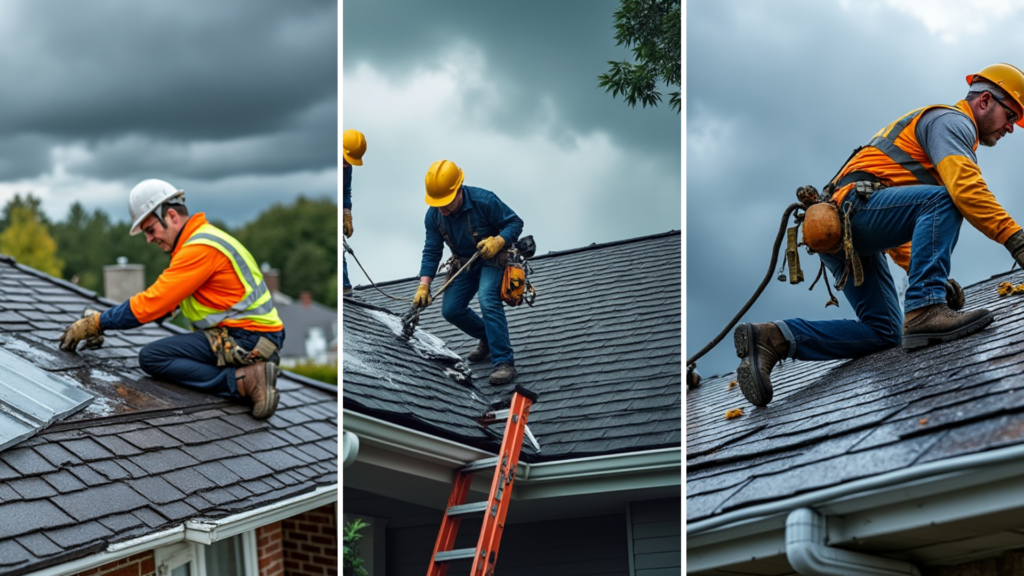
In emergencies, temporary fixes such as applying a specific cement composition or using a tarp can prevent unnecessary damage. However, after that, permanent repairs or shingle replacement should be done without hesitation.
Leaks in metal roofs can be temporarily sealed with waterproof tape or silicone sealants until a more permanent repair is possible.
Broken or displaced tiles can be temporarily patched with roofing cement or adhesive, but a permanent replacement for a leaking house roof is recommended.
For flat roofs, emergency repairs often involve patching the affected area with roofing tape or applying a temporary membrane to stop water ingress.
Anti-Leak Innovation and Modern Solutions

” The modern industry has seen significant innovation in recent years, driven by the need to protect both private and commercial properties from leaks and the associated damage.
At ID Flat Roof, we follow the development of anti-leak technologies. Here are some solutions that are available today”.
Advanced Technologies
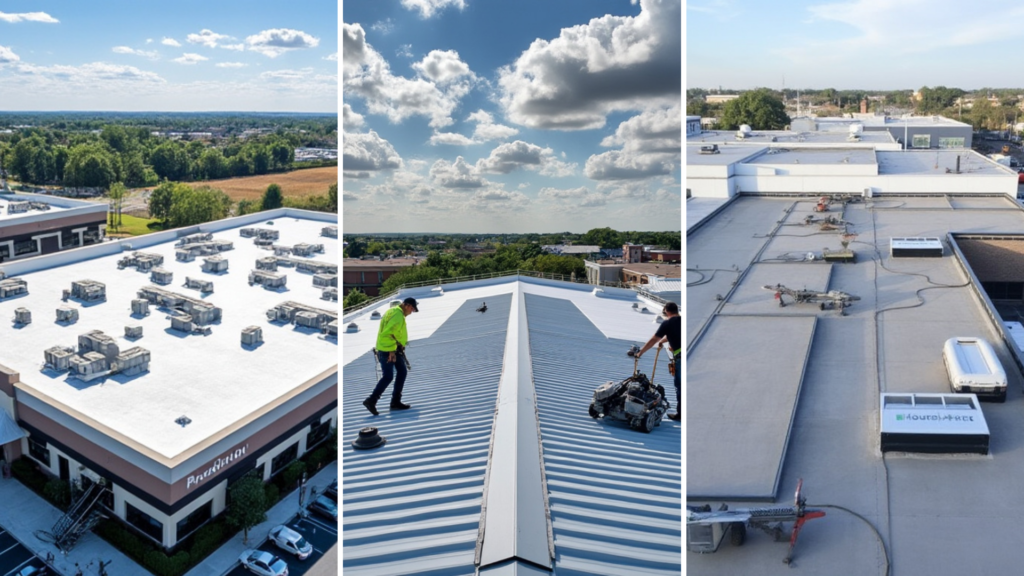
These so-called advanced materials differ from traditional alternatives in their better resistance to weather conditions. Unlike synthetic or composite materials, they are resistant to cracking and deterioration under severe weather conditions, even in hot summers and cold winters.
Modified bitumen (mod-bit) roofing has been improved with added polymers that enhance elasticity and durability. This allows the roofing material to change its geometric shape slightly with temperature fluctuations, preventing cracking.
Cool materials are energy-efficient but also contribute to leak prevention. By keeping roofs several degrees cooler, they exclude thermal stress and deformations. These materials are particularly beneficial and become long-term investments for commercial warehouses, malls, and office centers, especially in hot climates.
Liquid-applied roofing membranes, often used for waterproofing flat roofs, create a seamless, trustworthy barrier that prevents even tiny leaks. These membranes are applied not like any other materials but as a liquid and then cured to form a solid, flexible surface that resists water penetration, even in areas with high foot traffic or mechanical equipment.
Self-Healing Solutions
One of the most exciting and revolutionary innovations in the roofing industry is the development of self-healing materials that can automatically repair small cracks or punctures. These ‘healing’ materials are engineered to react when exposed to water or other environmental factors, sealing minor breaches before they become significant leaks.
Some manufacturers now offer asphalt shingles with self-healing skills. When exposed to heat, small cuts, scratches, or cracks in the shingles can close independently. This technology extends the lifespan and prevents long-term leaks from minor, unnoticed damages.
Polyurethane coatings with self-healing properties are used in flat and low-slope roofing systems. If small punctures occur, the material can re-bond to itself, maintaining its waterproof integrity and reducing the need for immediate repairs.
Smart Roofs
Integrating modern technology (like sensors) into roofing systems has resulted in “smart roofs” that can monitor their condition in real-time, alerting property owners to potential issues before they become serious.
Innovative roofing systems with built-in sensors can monitor signs of water entering the structure, temperature fluctuations mentioned above, and structural stress. These sensors can detect moisture accumulation within the roof structure and alert the building’s management system or the owner. This early warning system allows for proactive repairs.
Nowadays, roofers use drones. Drones with high-definition cameras and thermal imaging sensors are increasingly used for roof inspections. These drones can quickly scan large commercial roofs for leaks or weak points, making it easier for property managers to identify problems.
Efficient enough ventilation is critical for removing excess ‘harmful’ moisture (both in the attic and living rooms), which can lead to leaks over time. Smart ventilation systems are programmed to adjust airflow based on temperature and humidity levels, ensuring the area remains dry and reducing condensation risk.
Underlayment Innovations
Significant advancements have been made in roofing underlayment, the layer installed beneath the outer covering. These underlayments act as an additional barrier against water, ensuring that even if the outer layer is damaged, water does not penetrate deeper inside the structure.
Traditional roofing felt is being replaced by high-performance synthetic underlayments, which are lighter, more durable, and more resistant to tears and water. These underlayments become reliable shields against leaks, particularly during heavy rainfall or extreme weather events.
Peel-and-stick underlayment is gaining popularity due to its self-adhering nature, creating a watertight seal. These underlayments are particularly effective in areas prone to hurricanes or heavy snowfall, where wind-driven rain or ice dams are common phenomena.
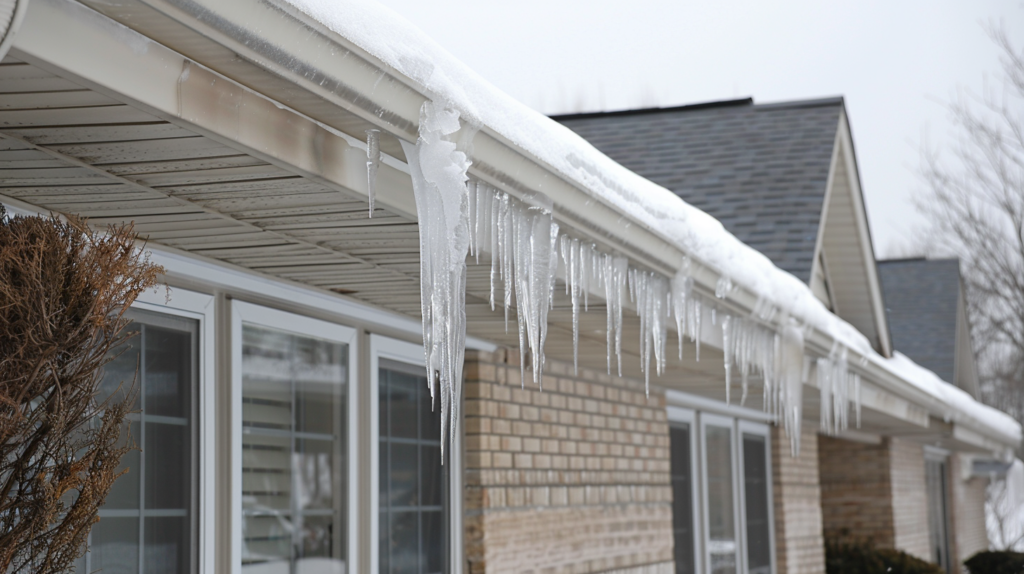
Green Roofs
The benefits of green roofs go beyond aesthetics and environmental impact—they also provide adequate protection against roof water leaks.
The vegetation and soil in green roofing systems absorb water, reducing runoff and the likelihood of water pooling on the roof. This decreases the strain on drainage systems and lowers the risk of leaks during heavy rainfall.
Green roofs include several layers, including a waterproof layer, root barriers, and drainage systems. These layers work together to prevent dripping water from reaching the internal structure, offering redundancy in leak protection and making green roofs highly resistant to water issues.
Cold-Applied Solutions
Cold-applied systems are a significant innovation in the industry, particularly for commercial properties. These systems use specific adhesives and coatings rather than hot asphalt or torch-applied materials, which reduces the fire hazard during installation and provides a seamless, watertight finish.
Seamless Roofing
Seamless EPDM is a type of synthetic material that is highly (if it is quality enough) resistant to water and UV damage. Seamless EPDM options are particularly effective for flat roofs, as they create a continuous surface without additional seams and joints.
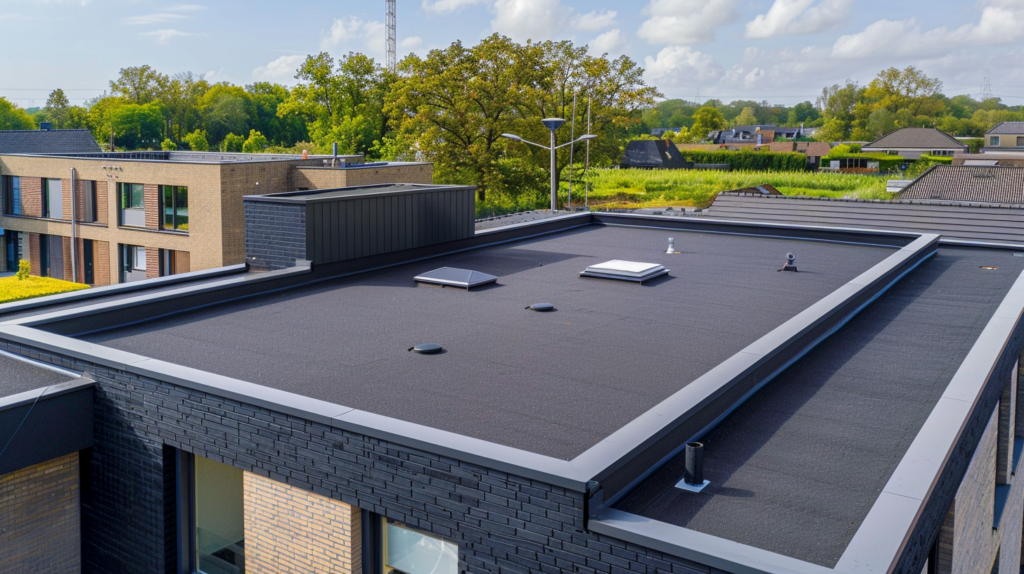
Roofing membranes are commonly used in commercial applications. These materials are heat-welded at the seams, creating a trouble-free barrier that is highly resistant to roof water leaks. Their flexibility allows them to adapt to temperature changes without cracking or deteriorating.
Prefabricated Roofing Components
Prefabrication has become an innovation in the roofing industry that helps improve roof leak-proofing. Prefabricated roofing components, such as modular panels and pre-flashed sections, ensure consistency and reduce the likelihood of errors during installation.
Prefabricated flashing systems eliminate the guesswork in making a watertight seal. These components are designed to fit perfectly with modern roof systems, lowering the risk of water intrusion.
Modular roofing panels, pre-assembled with insulation and waterproof layers, simplify the installation process and provide consistent protection against leaks. These panels are particularly beneficial for commercial applications, where large roof areas can be installed quickly, accurately, and efficiently.
Conclusion in a Nutshell

Roof leaks are a problem that should not be put off for a long time. If you notice the symptoms mentioned above, call your local roofers immediately.
Do you want to ensure your roof is protected against leaks? Entrust the design and installation to professionals at the initial stage. Choose modern materials and roofing solutions. Remember that even a perfect roof requires maintenance and seasonal inspection.
Do you still have questions? Do you need help with roofing projects? Have you noticed a roof water leak? Contact our ID Flat Roof experts. We will help you with any roof tasks in Boston and Massachusetts.
Denis is the driving force behind ID Flat Roof, a leading company in Boston specializing in flat roof repair and installation for over 20 years.
Expertise:
Denis excels in PVC, TPO, EPDM, and rubber roofing. His meticulous approach ensures quality and customer satisfaction.
Innovation:
Denis incorporates cutting-edge solutions like skylights and solar PV roofing.



